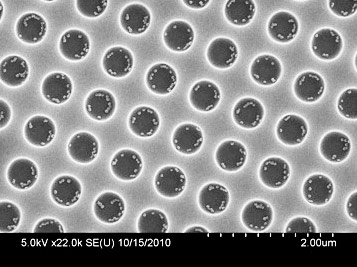 With the fossil fuel levels around the planet steadily declining, both governments and individual consumers are looking for alternate energy sources to reduce costs and carbon footprints. You might want to ask your handyman how you can convert your house to be more energy efficient. Solar energy, once an inefficient and expensive process, has had many recent breakthroughs that, despite consistent business litigation from its opponents, may well put it at the top of the list for the next clean, renewable energy source the planet turns to for its power.
With the fossil fuel levels around the planet steadily declining, both governments and individual consumers are looking for alternate energy sources to reduce costs and carbon footprints. You might want to ask your handyman how you can convert your house to be more energy efficient. Solar energy, once an inefficient and expensive process, has had many recent breakthroughs that, despite consistent business litigation from its opponents, may well put it at the top of the list for the next clean, renewable energy source the planet turns to for its power.
Many of these breakthroughs have to do with lowering the costs of producing the venerated photovoltaic cell. Photovoltaic, or PV, cells are what grab the sun’s rays and convert them into usable energy. Traditionally, these have been expensive to mass produce even though, once in place, they produce one hundred percent clean and renewable energy, leave no carbon footprint, and last over a quarter of a century.
One breakthrough discovered by physicists at the University of Illinois is that a covering of silicon-based nanoparticles on a PV cell can drastically increase its energy output. Conventional PV cells have been limited for the most part to converting light into energy and discarding the potential in the heat energy produced by the ultraviolet range of the sun’s energy spectrum. The integration of this tiny layer of silicon nanoparticles allows some of that ultraviolet energy to be converted into electrical energy instead of being lost as extra heat and therefore improves the cell’s performance by nearly sixty percent in the ultraviolet range. And, best of all, coating a PV cell with this thin layer costs next to nothing.
Another improvement comes in the form of cadmium telluride. Traditional PV cells must be coated thickly with crystalline silicon, which is quite expensive. Cadmium telluride, a similar crystalline compound, costs about half the price of silicon, can be coated thinly on glass to extract energy from the sun’s rays, and is a great substitute for silicon. Although this compound was suggested for use in solar panels as far back as the 1950s, it was only recently that its use became feasible due to the discovery of a simpler and cheaper manufacturing process. A company named AVA Solar was recently given a three million dollar grant from the US government to research further into the possibilities of cadmium telluride and, barring any serious business litigation from their opponents, should begin to make some serious progress in introducing this compound into mainstream solar energy cell fabrication.
Other breakthroughs have been in the fields of reducing the thickness of the PV cell. A thinner PV cell means one that uses fewer raw materials, costs less, and is easier to manufacture. Thin-layer PV cells are being intensively researched in the solar energy community and have been steadily improving in their efficiency and potential. Another idea has been to use a carbon based polymer to create an organic PV cell that traps a comparable amount of light energy at a fraction of the cost. Both of these potential alternatives to mainstream solar energy technology still need much research and investment before they may be used commercially but steady progress is being made.